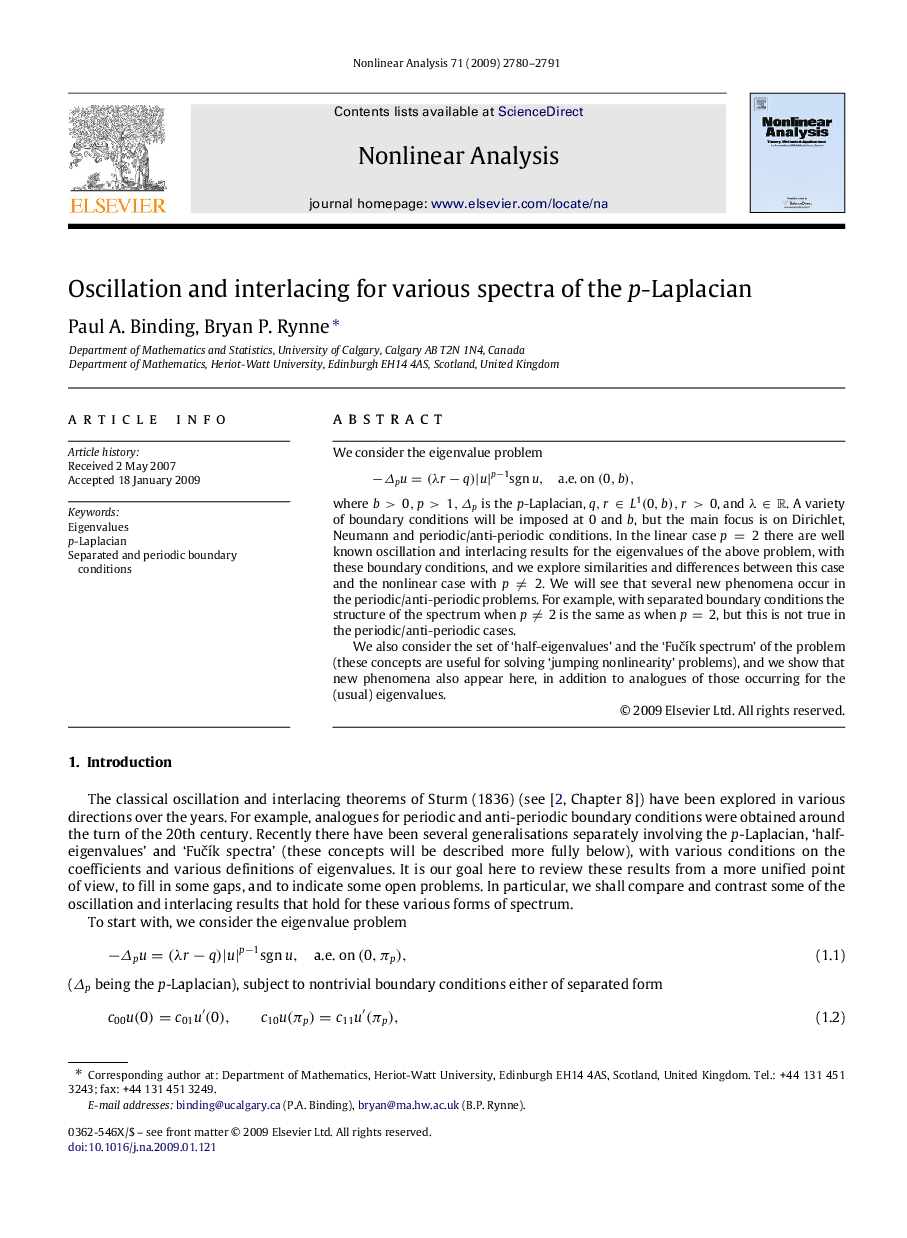| Article ID | Journal | Published Year | Pages | File Type |
|---|---|---|---|---|
| 842736 | Nonlinear Analysis: Theory, Methods & Applications | 2009 | 12 Pages |
We consider the eigenvalue problem −Δpu=(λr−q)|u|p−1sgnu,a.e. on (0,b), where b>0,p>1,Δpb>0,p>1,Δp is the pp-Laplacian, q,r∈L1(0,b),r>0q,r∈L1(0,b),r>0, and λ∈Rλ∈R. A variety of boundary conditions will be imposed at 0 and bb, but the main focus is on Dirichlet, Neumann and periodic/anti-periodic conditions. In the linear case p=2p=2 there are well known oscillation and interlacing results for the eigenvalues of the above problem, with these boundary conditions, and we explore similarities and differences between this case and the nonlinear case with p≠2p≠2. We will see that several new phenomena occur in the periodic/anti-periodic problems. For example, with separated boundary conditions the structure of the spectrum when p≠2p≠2 is the same as when p=2p=2, but this is not true in the periodic/anti-periodic cases.We also consider the set of ‘half-eigenvalues’ and the ‘Fučík spectrum’ of the problem (these concepts are useful for solving ‘jumping nonlinearity’ problems), and we show that new phenomena also appear here, in addition to analogues of those occurring for the (usual) eigenvalues.
